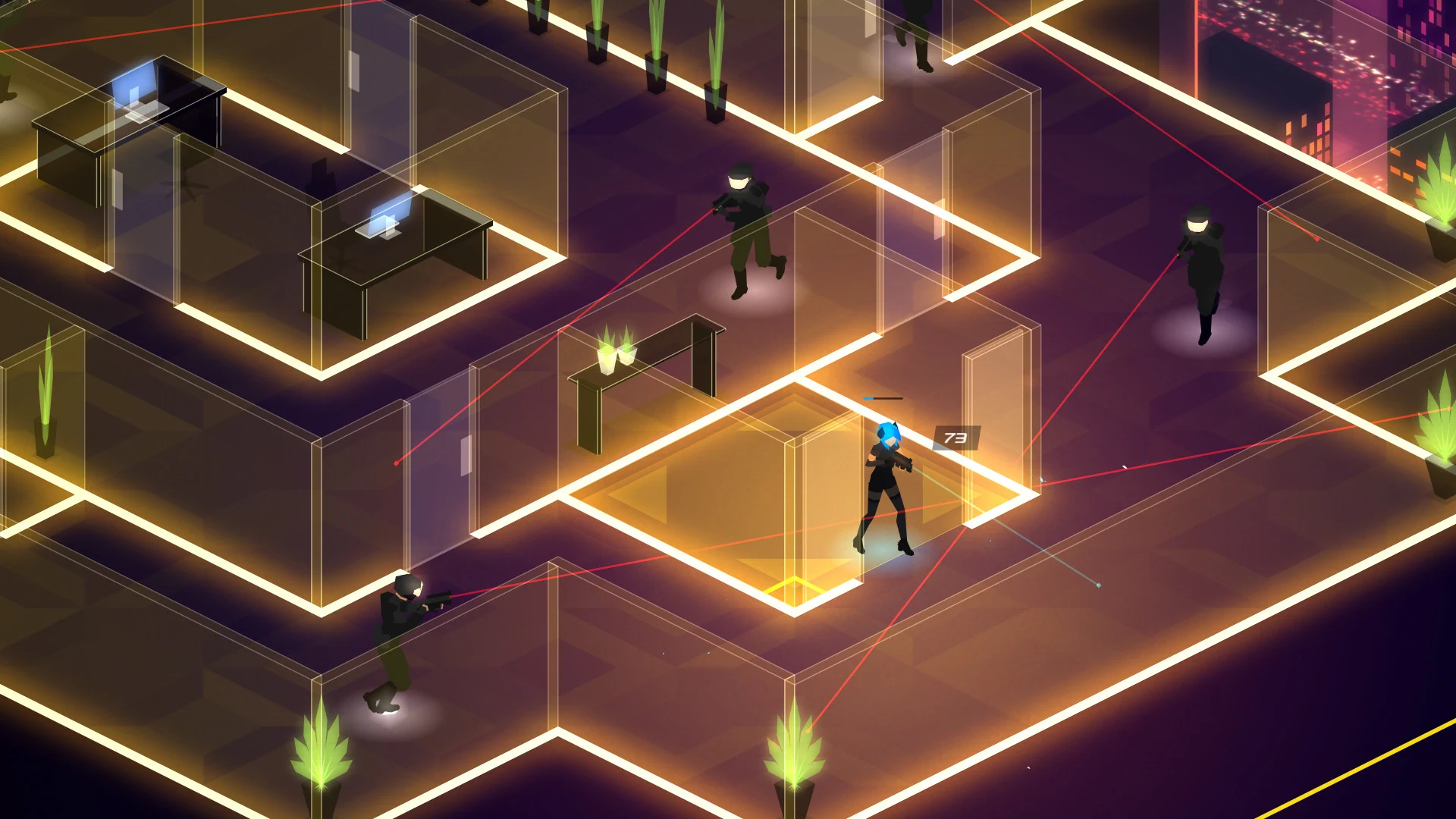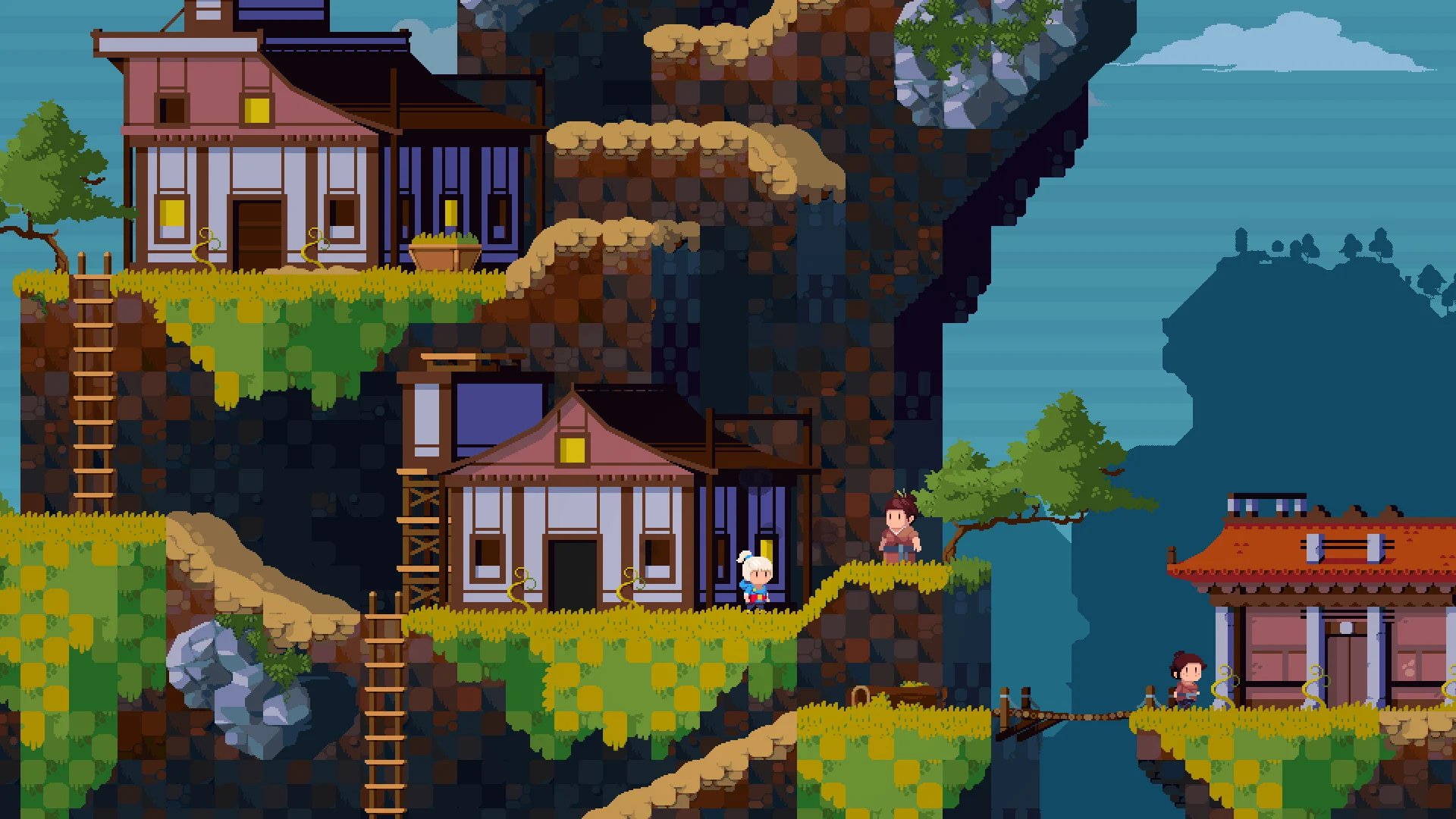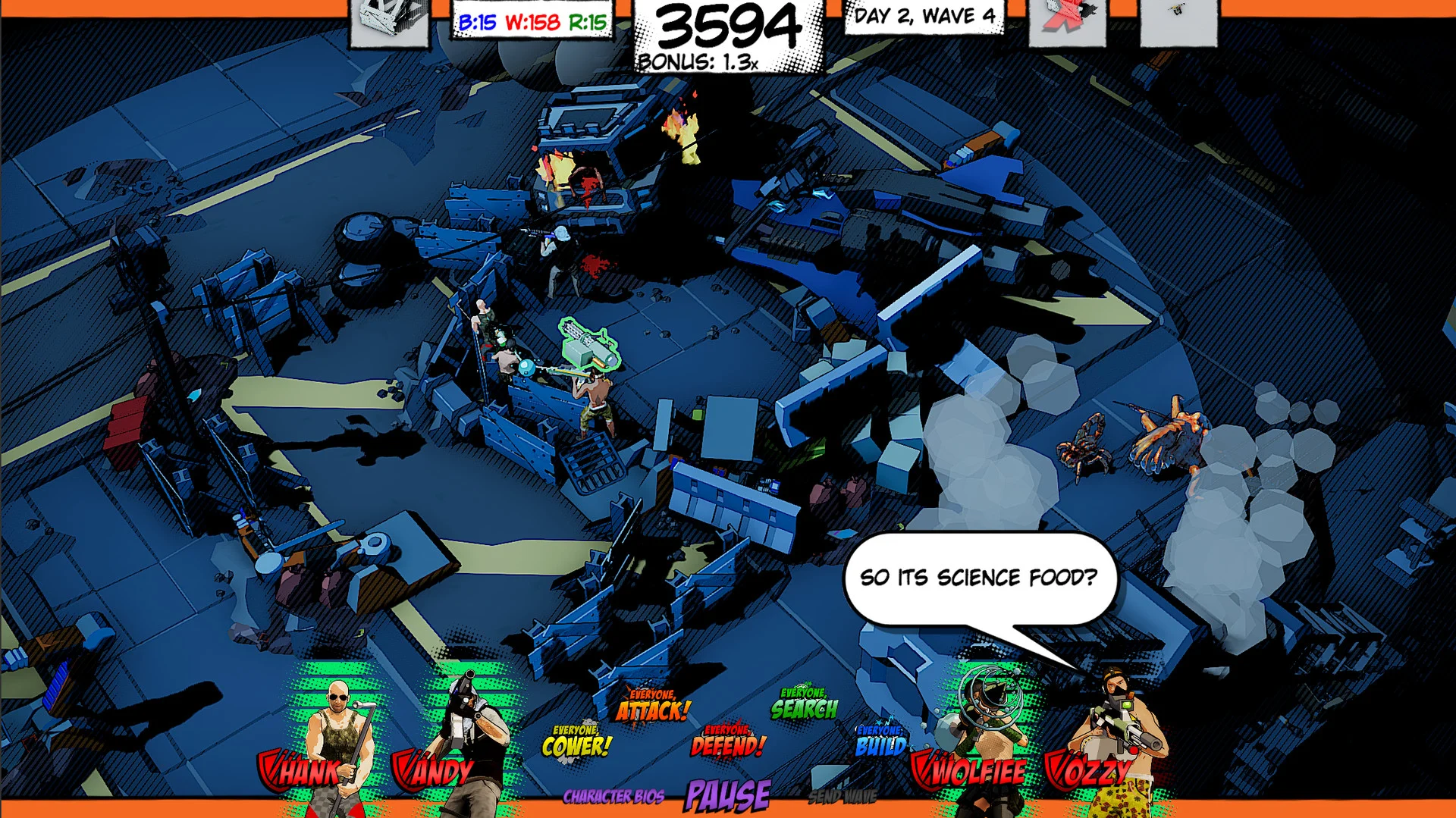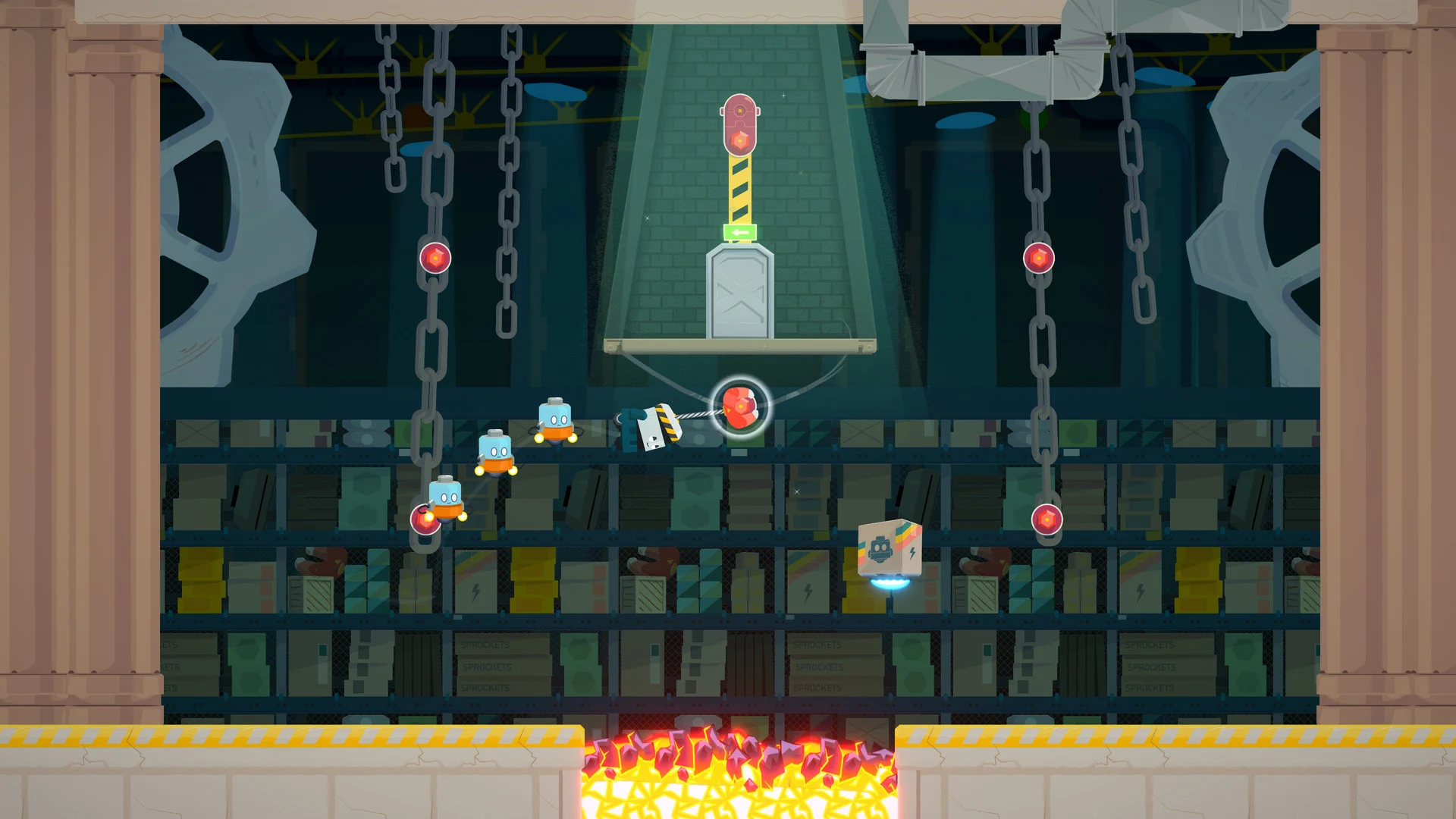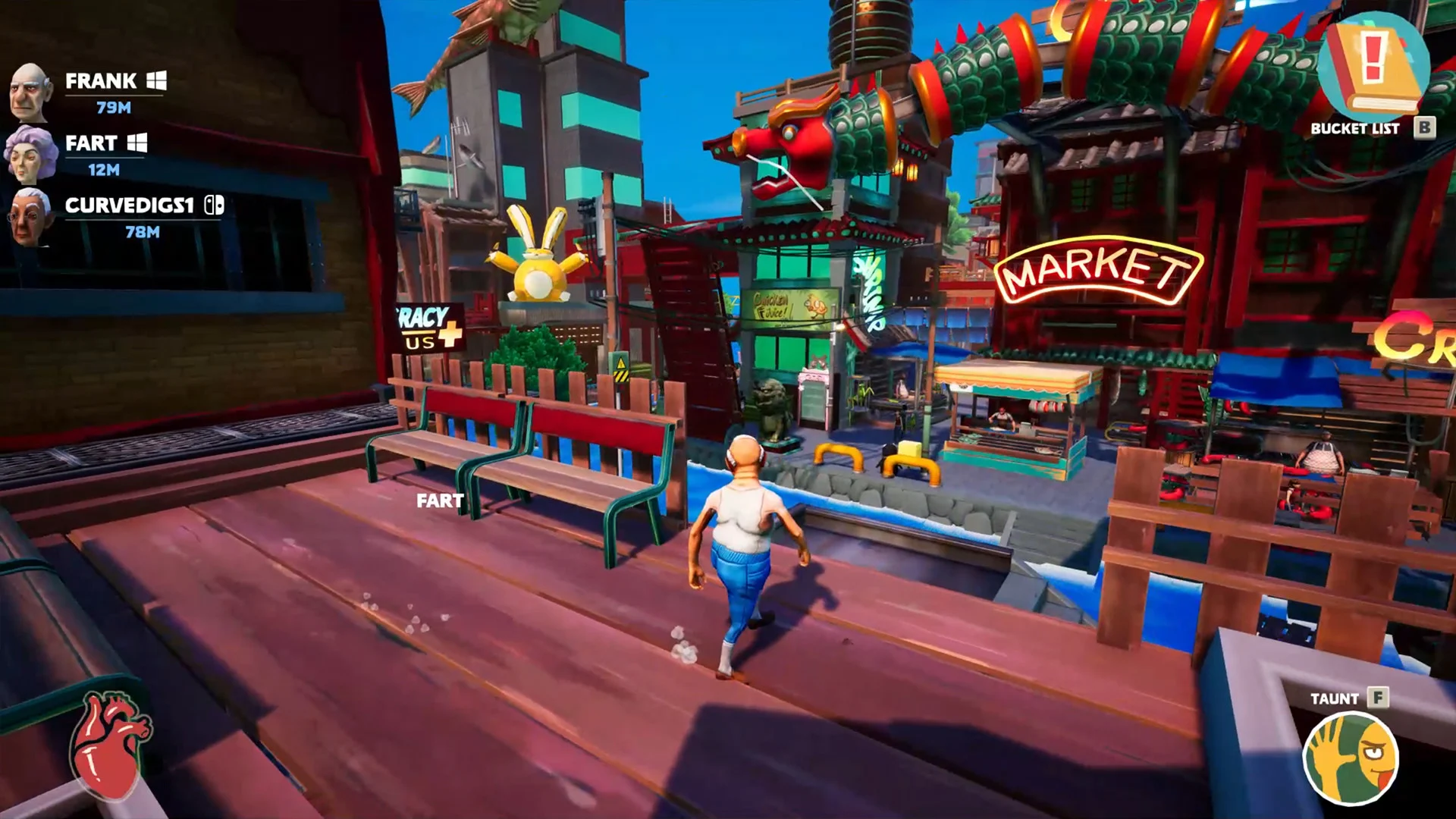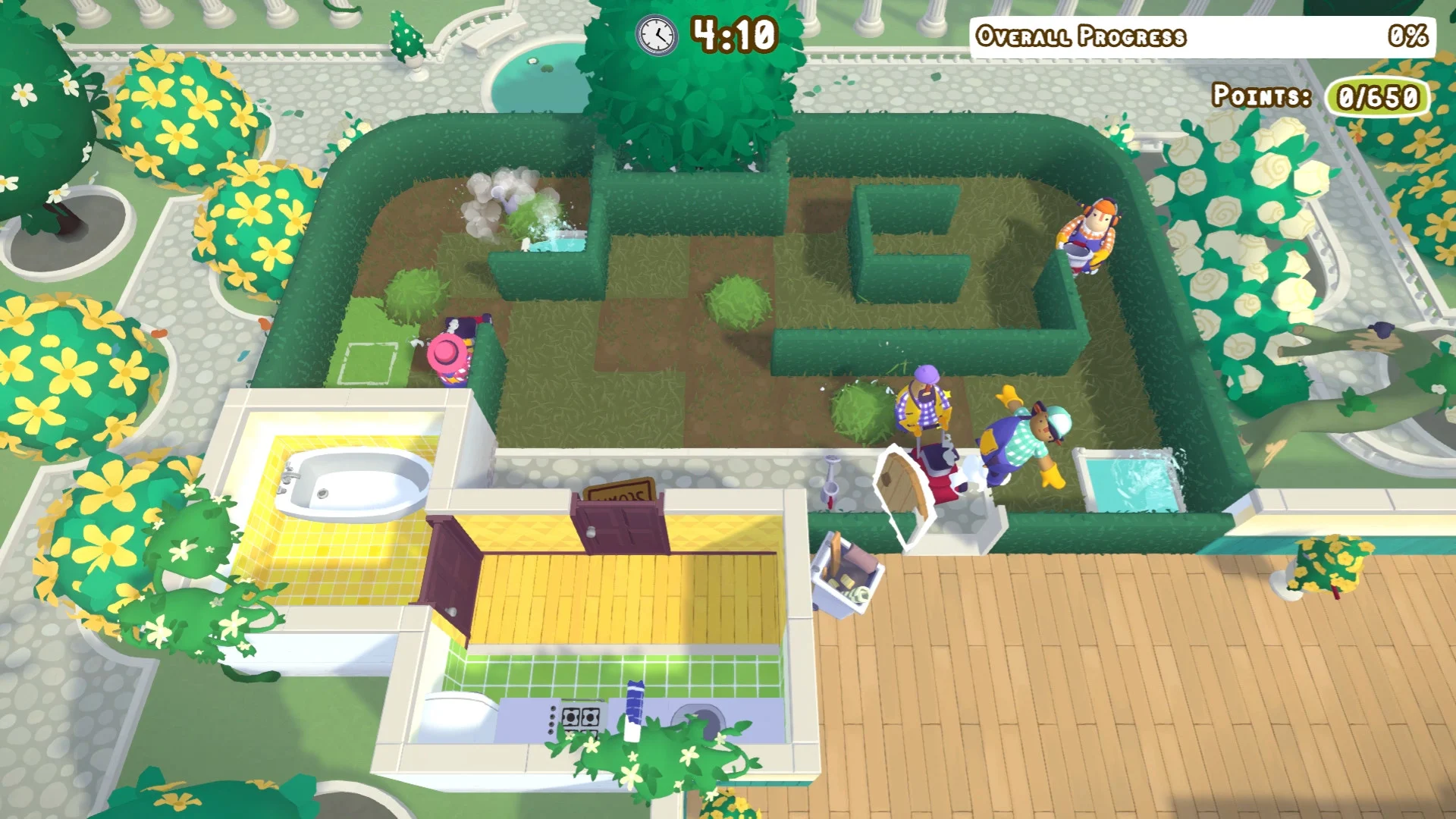When I first saw Lithium City the thing that initially intrigued me was its atmosphere. I have always been kind of a sucker for the futuristic neon aesthetic which is something that immediately stood out about Lithium City. After I watched the trailer though the gameplay started to interest me as the combat looked fast paced and stylish. Twin-stick shooters and beat ’em ups may not be my favorite genres, but it looked like a genuinely engaging combination in the game’s trailer. I was curious how all of these elements would work together though. Lithium City genuinely surprised me with its fast paced and super satisfying combat that was a blast to play until it ended all too quickly.
We at Geeky Hobbies would like to thank Nico Tuason for the review copy of Lithium City used for this review. Other than receiving a free copy of the game to review, we at Geeky Hobbies received no other compensation for this review. Receiving the review copy for free had no impact on the content of this review or the final score.
In Lithium City you play as an assassin/warrior who is tasked with reaching the top of a towering skyscraper. Standing in your way are armed guards, thugs and drones that are intent on stopping you from reaching your objective. You must kill all of the enemies that stand in your way utilizing any weapon you can get your hands on from various melee weapons to guns. Will you make it all of the way to the top of the skyscraper to face your greatest enemy yet?
Lithium City is basically what you would get if you combined a twin-stick shooter and a beat ’em up. On the surface the gameplay is quite simple as it only features a couple different controls. The game only gives you one basic attack which depends on the weapon (if any) that you have equipped. In the game you will find a bunch of different weapons from melee to ranged scattered around the levels and enemies that you can equip with the press of a button. The game even has a throw mechanic where you can throw your previous weapon at enemies to deal damage and stun them. If you have a melee weapon or no weapon at all (you will use your fists) the combat is similar to your typical beat ’em up as you just need to get close enough to land a couple blows in order to kill them. If you have a gun (all guns have limited ammo) the game turns into more of a twin-stick shooter as you use one analog stick to aim and press the attack button to shoot. In either case it usually only takes one or at max a couple hits to kill an enemy.
The same applies to you as well though as you can only take a couple hits before you die and return to your last checkpoint. The game does feature a recharging health mechanic though so if you can survive for a while without taking damage your health will automatically restore. To survive until your health recharges though you need to avoid enemy attacks. This is one of the reasons that the game gives you a quick dash ability which you can use at will as it appears to have no recharge period. This dash ability can be used to dodge enemy attacks or bring you towards enemies for quick strikes.
The game is mostly broken down into a number of rooms/ locations which are usually filled with a number of enemies. In order to unlock the door to reach the next room you need to defeat all of these enemies by whichever method you prefer. You can go in guns blazing and take enemies out before they even notice you. Otherwise you can also choose to take a more methodical approach of separating enemies so you don’t have to face all of them at once. Many of these situations just involve you overpowering/outsmarting enemies, but there are a few times where the game introduces some basic puzzle solving where you have to use the tools in front of you in order to proceed.
When I first saw Lithium City the thing that initially intrigued me was the atmosphere. While I thought the gameplay looked interesting as well, I have to admit that it wasn’t initially what drove me to play Lithium City. I should have been more focused on it though as it is great. While I don’t mind twin-stick shooters and beat ’em ups, they aren’t my favorite genres. In Lithium City though these mechanics work almost perfectly together. If I were to describe the gameplay in one word I would say fast. You can approach the rooms in a more methodical manner in order to catch the enemies off-guard. Normally I would probably do this, but in the case of Lithium City I did the complete opposite.
While the gameplay is still satisfying using a more methodical approach, I would recommend taking more of a guns blazing approach. I say this because the gameplay succeeds due to its speed. The game gives you a quick dash with basically no recharge time so you can dash around the rooms at will. This allows you to quickly navigate around enemies and put yourself in a position to take them out before they can even think about attacking you. I think the combat is so satisfying because it is so simple which allows you to attack enemies on the fly. I am normally the type of player to take things slowly, but it was really satisfying trying to adjust on the fly. Your character is clearly more powerful than the enemies, but you need to react quickly or they can take you out quickly due to their numbers advantage. While the melee combat is simple, the gun combat is even better. There is just something really satisfying about being able to dash into a room and kill an enemy with one or two shots before they even get a chance to react.
In addition to the combat the gameplay is really satisfying because it does a good job tweaking the formula for each chapter. The overall gameplay doesn’t change all that much between chapters, and yet due to the layout of the levels and other tweaks each chapter feels like a unique experience. The game really deserves a lot of credit for its level design. The levels are small enough that you are regularly forced into a firefight, but they still give you enough room to navigate and utilize the dash ability. The game really plays with the idea that you are traversing a futuristic city as the game does a really good job of utilizing various parts of the city to create interesting new areas to fight enemies.
As for the difficulty in Lithium City I would say that it is a little up and down. Some areas of the game are pretty easy while others can be quite hard. Basically in situations where there are only a small number of enemies the game is pretty easy as you can take them out without much trouble. The hardest parts of the game are when you are way outnumbered. This forces you to get more creative or rely on your reaction time in order to dispatch the enemies without being hit yourself. In these situations I died quite a few times. The penalty for dying is just a quick reset to the previous checkpoint. I think the discrepancy between the easy and hard sections have to somewhat deal with the enemy AI. The AI is not bad but there are ways to take advantage of the AI to make it easy to defeat enemies. In particular you can wait behind doors until enemies enter the doorway. You can then usually finish them off before they even have the chance to react. With more enemies to deal with you can’t really take advantage of this. I would say that the hardest part of the entire game is the final boss which can be quite difficult as I had to restart the battle quite a few times.
I ultimately had some mixed feelings about the story and atmosphere. The story doesn’t play a large role in the game. There is no dialogue (written or spoken) in the game. Most of the story is told through the various locations you visit. Therefore the story is mostly what you make of the environment. There is nothing wrong with the story as it feels like your typical dystopian future story. The atmosphere on the other hand is a completely different story. I was initially intrigued by the atmosphere, and it didn’t disappoint. The game does a good job utilizing the neon/futuristic aesthetic. The character designs and locations use a more stylized than realistic approach, but they really work for the game. People who like this type of theme/atmosphere should really enjoy this aspect of Lithium City.
While I really enjoyed Lithium City the game does have one pretty big issue. That issue is the game’s length. The game consists of six chapters which might not sound that bad at first. The problem is that doesn’t translate to a particularly long game. Some chapters are a decent length while others are quite short. I would say that most people should be able to finish the game within 2-3 hours. I would say that close to a half hour of that time I ended up spending trying to beat the final boss. I was very close to finishing the game in just one sitting and had no problems finishing it within one day. Unless you take your time playing the game I would guess most people would finish the game in one or two days.
Lithium City is great while it lasts, but it is too short in my opinion. I really wish the game would have been a little longer. While I could see replaying the game at some point, the experience of your second time through the game will be mostly the same. Normally I would make a bigger deal about the length, but the game only retails for $8 so it isn’t as big of deal as it otherwise could have been. The main reason I wish the game was longer is that I was really enjoying it and then it just ended. At times the game adds some cool new twists to the formula and instead of reusing them it moves onto the next twist. I think there were parts of the game that could have been expanded in order to lengthen the game.
Before playing Lithium City I had somewhat high expectations and yet I was still pleasantly surprised by it. The game feels like a combination of a twin-stick shooter and a beat ’em up. You traverse rooms killing all of the enemies that stand in your way with various weapons that you pick up. The combat is similar to other games from the genres, but it is really fun. The combat is really quick as you can dash around the rooms killing most enemies within one or two hits. Lithium City excels because it combines really satisfying combat with locales that regularly change and bring new twists to the gameplay. I thought the game was going to be good, but it ultimately was fantastic. Unfortunately the game is on the short side as most people should be able to finish it in around 2-3 hours. That is a real shame because I was having a blast playing the game and wanted to keep playing it.
My recommendation for Lithium City comes down to two things. If you aren’t really interested in the fast paced twin-stick shooter/beat ’em up gameplay I don’t see it being the game for you. People who enjoy these genres though should love the game. The question then becomes whether you should pick it up right away or wait for a sale. That all depends on how important length is to you. The game is great while it lasts, but it only lasts 2-3 hours so those who prefer longer games should maybe wait for a sale. If length is not that important to you though I think Lithium City is well worth your money.
Buy Lithium City online: Steam

